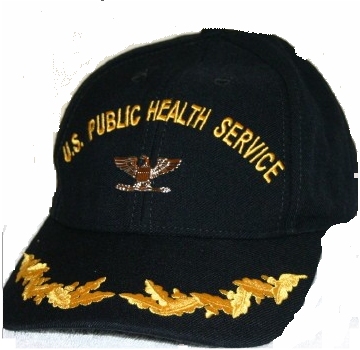
Workforce Policy and Plans Division, Office of Commissioned Corps Force Management
Please note: Any and all uniform questions can be sent electronically to phsccuniform@hhs.gov
QUESTIONS AND ANSWERS
A: Policy does not allow the display of a necklace, regardless of religious significance, on the outside of the uniform.
Current policy, CC26.3.1, Section 4j, http://dcp.psc.gov/eccis/documents/CCPM26_3_1.pdf , states only one necklace or choker may be worn and it shall not be visible. Also, CCD 121.03, Section 6-3a, http://dcp.psc.gov/eccis/documents/CCD1_2_1_03.pdf , states that religious items or articles not visible or otherwise apparent may be worn with the uniform, provided they shall not interfere with the performance of the officer’s duties or interfere with the proper wearing of any authorized article of the uniform under policies established by the Assistant Secretary for Health.
So, in summary, you may wear a necklace as long as it is not visible.
Q: May an officer in uniform who is attending a funeral (or any other service) at a Jewish synagogue wear the Yarmulke when entering the sanctuary? What about the wear of similar type items for bona fide ceremonies of other religions?
A: Yes, CC26.3.7, Section H, http://dcp.psc.gov/eccis/documents/CCPM26_3_7.pdf states that when participating in religious services in a house of worship, uniformed officers may wear the vestments of their religion.
Also, CC26.3.1, Section 4d, http://dcp.psc.gov/eccis/documents/CCPM26_3_1.pdf to paraphrase, an officer is allowed to wear the uniform and religious items while attending a bona fide religious service or observance. And, finally, CCD 121.03, Sections 6-3e and 6-4, http://dcp.psc.gov/eccis/documents/CCD1_2_1_03.pdf , to paraphrase, officers may wear religious items consistent with the above mentioned policies.
In summary, an officer can wear religious items (e.g., Yarmulke) only while attending an actual service/ceremony and not for routine daily wear.
Q: Has the miniature gold Field Medical Readiness Badge (FMRB) been finalized?
A: Yes, the final design has been approved. The vendor will notify the Office of Commissioned Corps Force Management and the Office of Commissioned Corps Operations when mass production has begun.
Q: Has the new version of the subdued FMRB been finalized?
A: Not at this time. The vendor has presented several samples and review is ongoing. However, it is anticipated to be ready before the start of the 2008 hurricane season on 1 June.
Q: Is the poly/cotton poplin black windbreaker authorized for wear?
A: No, this item was stricken from the PHS uniform inventory in 2003. This item is easily identifiable because the jacket fades overtime and appears a very dark grey or washed out black. It also has buttons on the cuffs and collar. The current authorized windbreaker jacket is 55/45 percent poly/wool with knit/elastic collar and cuffs. It has a zippered front, with two inverted slant pockets and shoulder epaulets.
Q: How do I ‘blouse’ my Battle Dress Uniform (BDU) trouser pants?
A: There are several commercially made items which you can use to accomplish this task, such as: the olive drab elastic bands with metal hook closure; Velcro ® elastic straps; or metal spring bands, all of which go over the top (calf area) of the combat boot. The bottom of the trousers should be tucked/rolled under the blousing strap; this may take more than one tuck/roll. The knot of the bootlaces and the green tie straps of the BDUs should not be visible when properly bloused. Also, there should not be a gap from the bottom of the trouser to the top of the combat boot (e.g., socks, regardless of color, or skin, should not show).

Q:When wearing the Command Ball Cap or the BDU cover, which way does the O-6 (CAPT) eagle face?
A: The eagle faces the wearer’s right.

A: Yes, Required Daily Wear was signed by Acting Assistant Secretary for Health, Dr. Donald Wright, on 14 March 2008. The policy is located on the electronic Commissioned Corps Issuance System (eCCIS) Web site at http://dcp.psc.gov/eccis/documents/CCPM26_3_2.pdf. The effective date for required wear is 1 July 2008.
Q: There have been many policies that have been signed over the past year; can you provide a guide as to current phase-in/out or effective dates of certain policies?
A: All of the uniform policies that have been signed since last summer can be found on the eCCIS Web site. However, here is the break down of current phase-in/out or effective dates:
| Surgeon General as National Uniform Authority Required Daily Wear Phase-out of the Army Sweaters Phase-out of the pewter FMRB Phase-out of the Salt and Pepper Uniform NLT Uniform Advisory Committee |
1 April 2008 1 July 2008 1 January 2009 1 January 2009 Not later than 1 August 2009 First meeting to be held spring 2010 |